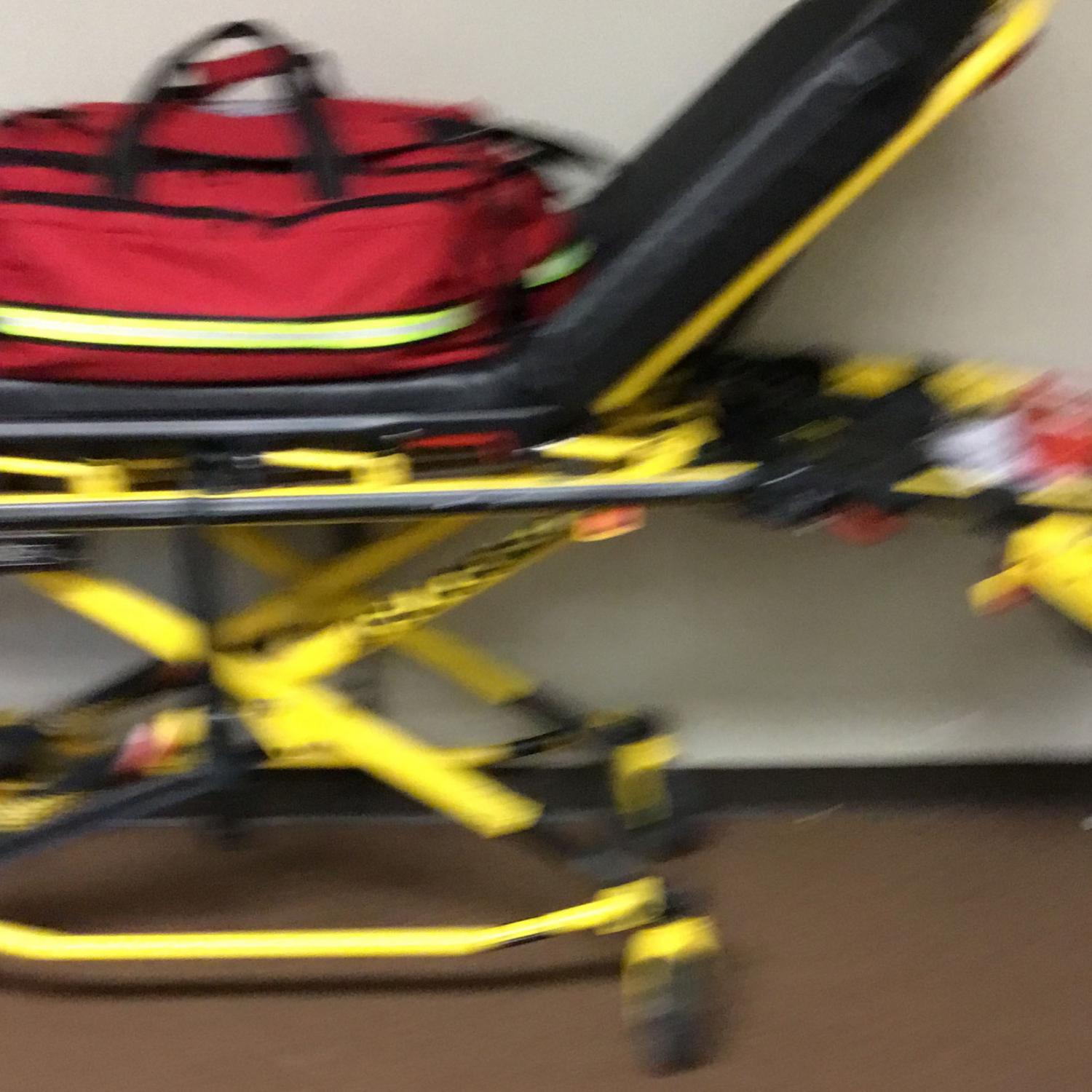1.

Electrocardiogram (ECG) monitors are like nonfiction writers: taking in the world and spitting it out in fewer dimensions with more meaning—maybe even some sense. ECGs only show electrical activity, not a heart’s physical pumping, so they are a highly biased picture, like a writer’s gallons of ink on a page. There isn’t any in an ECG monitor—the heated stylus reacts with the paper to author a cardiac-rhythm strip, which both is the truest thing it can say and also is not true. Just a clue. Learning to interpret rhythm strips is a lot like developing an ear for the interesting things people say. It’s mostly following a formula, just practice and rules, always applied within a broader context, but art when done masterfully. If we don’t speak the language even the most beautiful anything will simply be squiggles and sounds, no sense. There are three types of irregular rhythms, and each is absolutely special and distinct: occasionally irregular, regularly irregular, and irregularly irregular. “Does that make sense?” asks Ray, our paramedic instructor. No. Ray speaks the language; once you can understand these printed rhythms, it’s hard not to.
Reading rhythms. “You gotta know the rules of the game to play the game efficiently,” Ray says. The game here is looking at squiggly lines on a piece of paper: a story of someone’s heart. We say we “interpret” rhythms, but this isn’t some kind of creative enterprise—it’s all ranges, regularities, rules. Still, a beautiful set of rules. What’s the rate of the rhythm? Regular or irregular? Wide or narrow QRS complex? Is the ST segment elevated? Depressed? PR interval—is it within a normal time frame? There are a lot of rhythms, and it’s difficult to say which one is true. “We’re trying to find the anomaly,” Ray says. “Where’s Waldo?, hide-and-seek, MARCO!” It’s an almost-lost-cause treasure hunt for which rhythm a heart is playing, but we have these hints, these colors, these clues. (#VQRTrueStory by @RiannaStarheim)
2.

Five inches. Size of a fist. “A greedy fucking bitch,” says Ray, our paramedic instructor. He means the heart.
Our hearts are really two pumps: One brings blood to the lungs for oxygen and the other pumps this oxygen-jazzed blood to the rest of the body. They’re connected by the mediastinum, but the pumps and circuits are actually separate. The ligamentum arteriosum connects the biggest blood vessel in our bodies, the aorta, with the blood vessels that feed our lungs, the pulmonary arteries. The aorta is an inch in diameter—the size of a garden hose. When I learned this in EMT school, it didn’t seem like much to me. But it is. It is!
The ligamentum arteriosum is a vestige of our history, back to our birth. As fetuses, we didn’t need to send blood to our lungs because we didn’t breathe in utero. Back in those days, our hearts were just one pump, not two, and the halves weren’t separate, distinct circuits. A blood vessel called the ductus arteriosus shunted blood away from our lungs, to our aortas and the rest of our bodies. That’s great for fetal efficiency, but that shunt would kill us after we’re born, because it blocks blood from reaching the lungs. So within breaths of birth, the shunt transforms into a ligament, the ligamentum arteriosum.
It’s an ingenious anatomical repurposing, but the ligamentum arteriosum can also kill us in a traumatic event like a car collision, where it can act like a wire cheese cutter, shearing the aorta. We have five to six liters of blood in our bodies, almost all of which we circulate within a minute. If your ligamentum arteriosum slices your aorta, you might be dead a lot quicker than that.
The top of the heart is called the base and the bottom is the apex—“so they’ve already got you all screwed up right out of the gate,” Ray says. We’re learning dozens of rhythms, mostly dysrhythmias—many hearts are a musician offbeat. Many murmur. The heart would be a horrible writer—it’s very good at keeping us alive because it’s redundant redundant redundant redundant redundant. Master of a backup plan. (#VQRTrueStory by @RiannaStarheim)
3.

In paramedic school, we learn to map the blood vessels onto a twelve-lead electrocardiogram, like turning a map into a globe. “We’re going to look at this in a way you never have before,” says Ray, our paramedic instructor. The anatomy, electricity, the way hearts break and beat. Cardiac scenarios often start with arrest, or at least devolve quickly into it. The good news is that a patient won’t get “more dead,” Ray tells us, but that doesn’t mean we can’t do harm.
Ventricular fibrillation, V-fib, is a cardiac rhythm in which a patient has no pulse. But it’s one of two shockable rhythms, which means it’s incompatible with life, but not necessarily with survival. Any patient in V-fib is “dead.” But they might not remain so.
Ventricular tachycardia, V-tach, and its trademark tombstones; bradycardias for which we might transcutaneously pace to capture the reins of a patient’s heartbeat and speed it up; the various degrees of atrial-ventricular heart blocks—“that is one pissed off heart,” says Ray, about a third-degree block. Pulseless electrical activity (PEA) and asystole look the same mechanically, but asystole is just a dead heart. PEA is not—but it might be soon. “There’s never an always and never a never,” Ray says.
Of the dozens of cardiac rhythms, P-wave asystole, is the most sad. This patient is dead, and will almost definitely remain so. The ventricles, which push blood to the lungs and the rest of the body, know this and have given up. But the other half of the heart, the atria, is holding out hope. Asystole literally means “without contraction,” so any asystolic rhythm with another word denoting activity is an oxymoron. The only rhythm nearly as lonely as this one is agonal asystole, where the heart is dead and will likely remain so, but from time to time will pump feebly, trying; broken beyond redemption and aware of this, but still blindly stubborn. In these patients, the last active function is the fight of a half-given-up-hope heart. (#VQRTrueStory by @RiannaStarheim)
These dispatches are from #VQRTrueStory, our social-media experiment in nonfiction, which you can follow by visiting us on Instagram: @vqreview.







